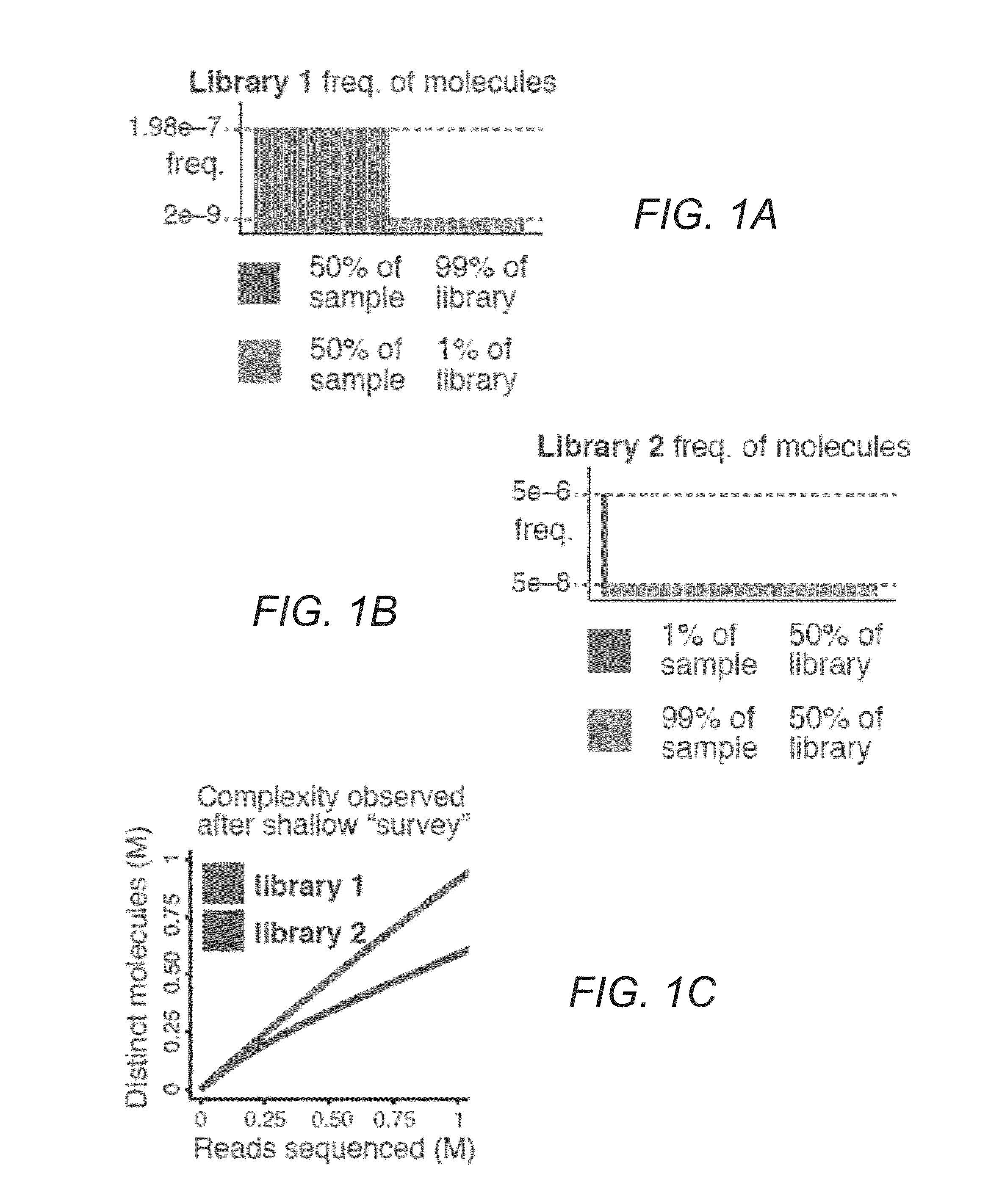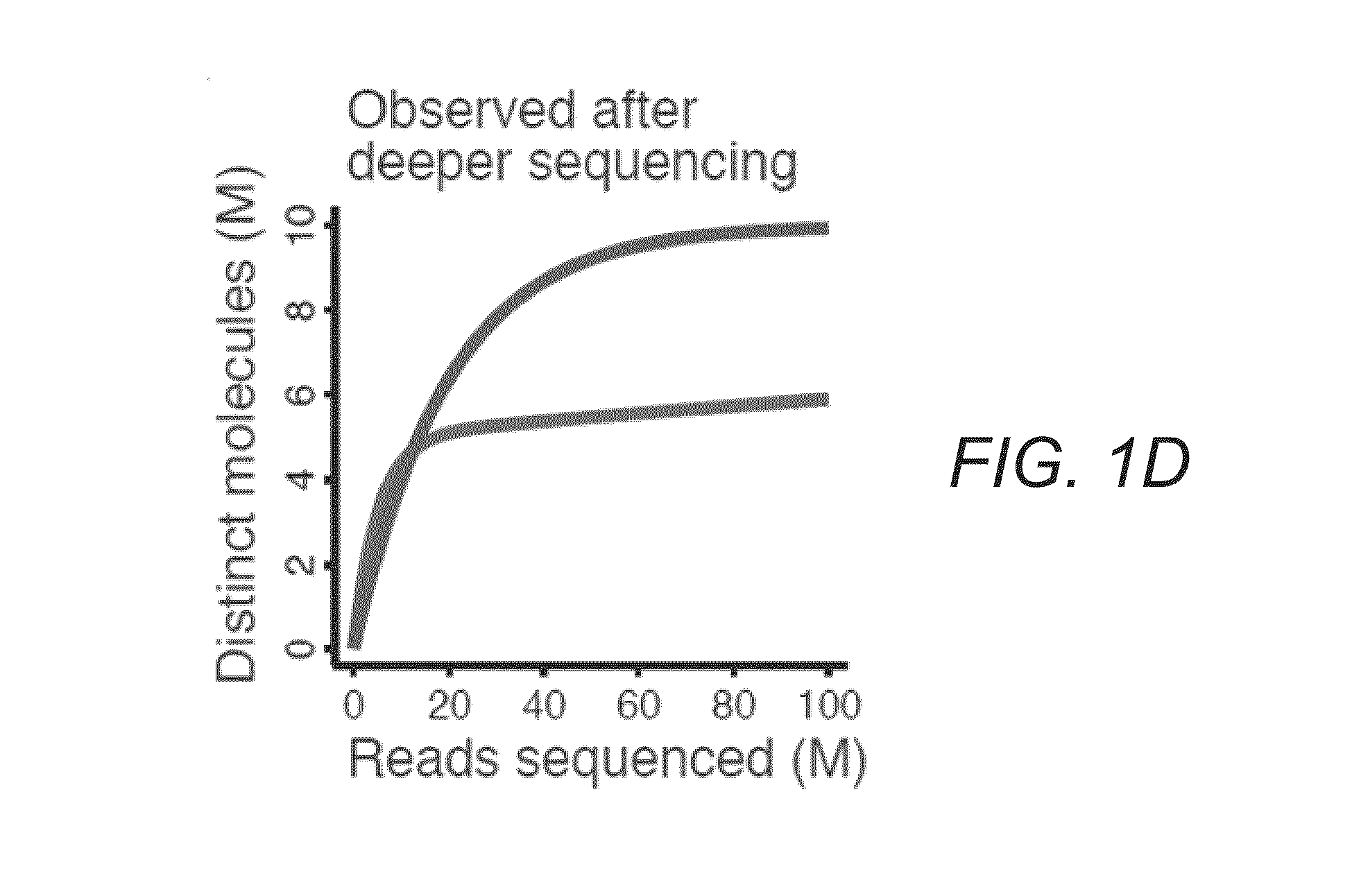Predicting the molecular complexity of sequencing libraries
- Summary
- Abstract
- Description
- Claims
- Application Information
AI Technical Summary
Benefits of technology
Problems solved by technology
Method used
Image
Examples
Embodiment Construction
[0032]Illustrative embodiments are now described. Other embodiments may be used in addition or instead. Details that may be apparent or unnecessary may be omitted to save space or for a more effective presentation. Some embodiments may be practiced with additional components or steps and / or without all of the components or steps that are described.
[0033]FIGS. 1A-E illustrate difficulties in predicting library complexity from initial shallow sequencing. FIG. 1A illustrates two hypothetical libraries containing 10 million (M) distinct molecules. Half of the molecules (5 M) make up 99% of library 1. FIG. 1B illustrates only 10,000 molecules that make up half of library 2. FIG. 1C demonstrates based on a shallow sequencing run of 1 M reads, that library 1 appears to contain a greater diversity of molecules. FIG. 1D shows after additional sequencing, library 2 yields more distinct observations. FIG. 1E illustrates similar situations occurring in practice. Initial observed complexity from...
PUM
 Login to View More
Login to View More Abstract
Description
Claims
Application Information
 Login to View More
Login to View More - R&D
- Intellectual Property
- Life Sciences
- Materials
- Tech Scout
- Unparalleled Data Quality
- Higher Quality Content
- 60% Fewer Hallucinations
Browse by: Latest US Patents, China's latest patents, Technical Efficacy Thesaurus, Application Domain, Technology Topic, Popular Technical Reports.
© 2025 PatSnap. All rights reserved.Legal|Privacy policy|Modern Slavery Act Transparency Statement|Sitemap|About US| Contact US: help@patsnap.com



